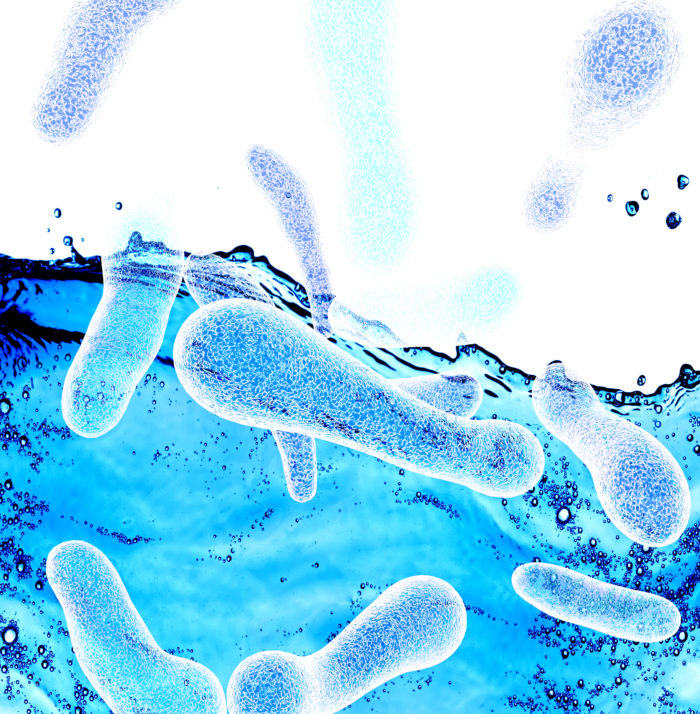What factors increase the risk of Legionella and Legionnaires’ disease? How do I test for Legionella disease?

Legionnaires’ disease is a central safety concern for business owners, manager and tenants alike and it is now killing 1 in every 10 people who are infected1.
Industries specially at risk:
- Spa, Pools & Hot tubs – at home or in the gym, hotels, cruise ships
- Hospitals and care homes
- Hotels & Hospitality
- Facilities Management
- Car Washes2
- Shipping – cruise ships and container ships
- Water tanks and storage in remote areas
- Domestic Water Systems
We know that stagnant water in the pipes can and will lead to problems with water quality and increased Legionella risk. With the UK entering repeated lockdowns, pubs, restaurants, non-essential shops and office buildings will be facing periods of closure.
Managing the risk of Legionella in water systems, in order to prevent bacteria from growing and spreading, is essential for protecting public health. It is also far more cost-effective than responding to an outbreak. Legionella testing should be done frequently, in order to protect businesses and the general public from Legionnaire’s disease3.
Causes for Legionella growth include:
- Temperature – Legionella bacteria require a temperature range of 20° to 60° Celsius to flourish and multiply. The water in hot tubs is kept at between 30° and 35° Celsius, which provides the ideal temperatures for Legionella bacteria to grow.
- Stagnant Water – for instance in empty offices, hotel rooms & buildings. Stagnant water in the pipes serving unused water systems can encourage the growth of scale, sludge and amoeba which protect Legionella and provide the bug with nutrients – thus accelerating its growth and spread.
- Presence of vulnerable persons – like people with weakened immune system, who have undergone recent surgery, who use respiratory equipment, smokers, elderly & new-born babies are also more susceptible to infection.
- Generation of Aerosols – While Legionnaires’ disease can be caught from any water source that produces spray or aerosols, some common sources of infection are showers, humidifiers, birthing pools and respiratory devices, pools and spas, hot tubs, cooling towers, air-conditioning units, car washes and even ice machines. Aerosols (like the ones generated by car wash systems) can travel long distances. (The study of Outbreaks of Legionnaires disease Caused by Long‐Distance Spread suggests that in some cases Legionella can travel as far as 10 km4.)
- Design –
- Complicated pipework with dead legs and water systems where water is kept below 50° Celsius pose a threat, as they provide ideal conditions for rapid Legionella growth and spread. This includes facilities where schematics of old and new pipework may not be up to date or complete.
- The systems of filters, pumps and pipes (i.e. used in spa pools) can be complex and have significant surface areas upon which biofilm may build up. Biofilm is an ideal breeding ground for Legionella and it will protect the bacteria from biocides. Testing of water quality and biofilms and using chemical and microbiological monitoring is essential.
- Microbiological hazards– Threats introduced from external sources such as weather, atmosphere and surface surroundings can encourage the growth of Legionella. The risk increases further with the introduction of nutrients, which can include mucus, saliva, perspiration, dead skin, suntan lotion, spray tans, cosmetics, shampoo and soap residues, faecal matter and hair 4.
- Water Storage on vessels, ships and boats or in water tanks in remote locations – It is important that the source and quality of the water taken on board is known (although this may not always be possible). Conditions for storage of water on board ship are important, especially as they may be affected by temperature extremes when travelling in tropical regions. Higher temperatures encourage rapid Legionella growth.
Water Management: Regular cleaning and disinfection of water systems is crucial in areas most at risk. It is important that water systems are properly treated with biocides and that biocides are alternated frequently. If not, microorganisms may become resistant and will quickly multiply and spread. Biocide levels should be regularly checked by facility management companies to reduce the risk of infection.
Available Testing Methods for Legionella Disease:
Some experts recommend using laboratory and field tests in co-operation. New, innovative rapid field testing methods can give more timely results and provide critical information on dangerous Viable but Non-Culturable (VBNC) bacteria, minimising risk significantly.
1. Laboratory Testing – well known and reliable test method for Legionella, click here for more information. The standard Legionella culture test takes at least 10 days to confirm a negative result, positive results will be reported as soon as observed.
Products:
- Legionella Analysis for potable water
- Legionella Analysis for Pool, Spa & Hydropool
2. Rapid Field Tests – one of the most popular being the Rapid Antigen Test. Antigen-based rapid Legionella testing uses well established Lateral Flow Immunochromatographic Assay (LFICA) technology. This type of test is most widely used in clinical settings for the detection of Legionnaires’ disease in humans, and according to CDC, is the preferred diagnostic test for cases of Legionnaires’ disease 14.
Products:
- Hydrosense Legionella Test Kits – ideal for water as well as biofilm (swab) testing, results in 35 minutes, allows for sample collection from any water source or biofilm and has an excellent limit of detection of 100 cfu/l
Benefits of Rapid Field Tests:
- Immediate results (within 35 minutes),
- Ease of use – additional training not required,
- On-site & field – testing of the bacteria in its natural environment,
- Detects VBNC bacteria (the Hydrosense antigen test detects bacteria in all stages of its lifecycle, including dangerous Viable but Non-Culturable Bacteria, which cannot be detected by the culture method),
- High sensitivity,
- Results can be recorded using an App. Potential problems are immediately identified, and prompt remedial action can be taken.
Citations:
1 Cdc.gov. (2018). Legionnaires Disease and Pontiac Fever | Legionella | CDC. [online] Available at: https://www. cdc.gov/legionella/ [Accessed 30 May 2018].
2 Alvey J., Bebbington D., Chown P., Green G., Little D., Piper G., Surman-Lee S. (2008) Managing the Risk of Legionnaires’ Disease in Vehicle Wash Systems, Water Management Society Working Party. Online. Available at: http://www.whtlimited.com/doc/lib/194/vehicle-wash-systems-wms.pdf[Accessed 04 Oct 2018]
3 Loudhouse. (unpublished). Legionella Awareness Research. Hydrosense.
4 Megji S. (2017) The hidden dangers of spa pools, Health and Safety at work. Online, Available at https://www.healthandsafetyatwork.com/legionnaires/hidden-dangers-spa-pools[Accessed 04 Oct 2018]
Disclaimer: Only opinions based upon our own personal experience or information detailed in academic journals or other publications is cited. This has been done exclusively for anyone who is interested in this subject but is not intended to replace proper analysis. We cannot accept responsibility and liability of any kind which may result from the application of this information. We always recommend to consult an expert to discuss any test results or get a full recommendation on the specific subject and specific to your situation by an expert.
This information is owned by SimplexHealth and you do NOT have the right to reprint, sell, auction or distribute this information.
